Keywords
|
| D-Statcom, H-Bridge 5 Level Multilevel Inverter, Fuzzy Logic, PI Controller, PQ theory. |
INTRODUCTION
|
| Recent developments in electrical power systems such as deregulation, open access, and cogeneration may be creating transmission congestion and forced outages scenarios. Addition of a new transmission line is an almost impossible solution due to environmental and other considerations. Developing of new approaches to Power System Operation and Control are required for overload relief, and efficient and reliable operation. Supporting dynamic disturbances such as transmission lines switching, loss of generation, short-circuits and load rejection, needs the reactive control to be fast enough to maintain the desired voltage levels and the system stability Flexible AC Transmission Systems (FACTS), besides the underlying concept of independent control of active and reactive power flows, are an efficient solution to the reactive power control problem and voltage in transmission and distribution systems, offering an attractive alternative for achieving such objectives. Fuzzy logic is a form of many-valued logic; it deals with reasoning that is approximate rather than fixed and exact. Compared to traditional binary sets (where variables may take on true or false values) fuzzy logic variables may have a truth value that ranges in degree between 0 and 1. Fuzzy logic has been extended to handle the concept of partial truth, where the truth value may range between completely true and completely false. Fuzzy control is a methodology to represent and implement a (smart) human’s knowledge about how to control a system. In this paper a novel intelligence control scheme applied to static synchronous compensator for reactive power compensation of distribution system (DSTATCOM) is proposed, based on the cascaded H-bridge multilevel inverter configuration. |
WHAT IS INTELLIGENCE CONTROL?
|
| The popular areas of Intelligence control are fuzzy control, neural networks, genetic algorithms etc.Fuzzy control is a methodology to represent and implement a human’s knowledge about how to control a system. The aim of fuzzy control system is to replace a skilled operator, expert or experienced with a fuzzy rule based system. |
| A. Fuzzy Logic Controller |
| More than a decade, fuzzy control has emerged as one of the most active and fruitful areas for the research in the application of fuzzy set theory. Much successful applications in a broad range of areas starting from daily consumer products to aerospace have been developed .Fuzzy sets were first used to solve power systems long range decision making problems. |
| B. Basic Elements of Fuzzy logic Controller |
| Fuzzy control systems are rule-based systems in which sets of so-called fuzzy rules represent a linguistic control strategy. The aim of the fuzzy control systems is to replace a skilled operator, expert or experience with a fuzzy rule based system. The basic elements of a fuzzy logic controller FLC is shown in Fig. 1. |
| C. Fuzzification |
| Fuzzification is the process of converting a crisp variable input into a fuzzy variable. The process of transforming the numeric inputs in to a form that can be used by the inference mechanism. The inference mechanism uses information about the current inputs (formed by fuzzification), decides which rules apply in the current situation and forms conclusions about what the plant input should be applied. |
| D. Fuzzy Control Rule |
| The fuzzy control rules is the heart of the fuzzy logic controller where the knowledge base and decisionmaking logic reside. These rules tie the input fuzzy sets to the output fuzzy sets. These rules are often called fuzzy associative memory (FAM). These rules are defined by using linguistic variables such that IF (a set of antecedents are satisfied) THEN (a set of consequences can be inferred). Generally, the number of inputs and the number of membership functions determine the number of the system control rules. |
| E. Inference Engine |
| The inference engine is used to perform the necessary inference operation on all fuzzy rules. It assigns the degree of fulfillment (DOF) of each rule as the minimum of compared fuzzified values. The DOF is used in the defuzzification process. |
| F. Defuzzification |
| The defuzzification is the process of mapping from a space of fuzzy control actions defined over an output universe of discourse into a space of non fuzzy crisp control actions. Actually, it converts the fuzzified output of the inference engine into a crisp value. |
P-I CONTROL
|
| The combination of proportional and integral terms is important to increase the speed of the response and also to eliminate the steady state error. The PID controller block is reduced to P and I blocks only as shown in figure 1. |
 |
| Kp and Ki are the tuning knobs, are adjusted to obtain the desired output. A DC motor dynamics equations are represented with second order transfer function, |
| The p-q Theory is based on the α-β-0 transformation, also known as the Clarke Transformation [Clarke (1943)] like, |
 |
| Where p is the real power and q is the imaginary power. |
| The IRP p-q Theory suggests that |
| (i) An instantaneous reactive current can occur in supply lines of purely resistive loads. |
| (ii) An instantaneous active current can occur in supply lines of purely reactive loads. |
| (iii) A distorted current component can exist in supply currents of a linear load supplied with sinusoidal voltages. |
DISTRIBUTION STATIC COMPENSATOR
|
| A. Principle of DSTATCOM |
| A DSTATCOM is a controlled reactive source, which includes a Voltage Source Converter (VSC) and a DC link capacitor connected in shunt, capable of generating and/or absorbing reactive power. The operating principles of a DSTATCOM are based on the exact equivalence of the conventional rotating synchronous compensator. |
| In any practical DSTATCOM there are losses in the transformer windings and in the converter switches. These losses consume active power from the AC terminals. Accordingly, a small phase difference always exists between the VSC voltage and the AC system voltage. The aim of the control scheme is to maintain constant voltage magnitude at the point where a sensitive load under system disturbances is connected. The control system only measures the root mean square (rms) voltage at the load point, i.e., no reactive power measurements are required. The VSC switching strategy is based on a sinusoidal PWM technique which offers simplicity and good response. |
| B. Cascaded H-Bridge Multilevel Inverter |
| The below mentioned Figure-4 shows the circuit model of a single CHB inverter configuration. By using single H-Bridge we can get 3 voltage levels. The number of output voltage levels of CHB is given by 2n+1 and voltage step of each level is given by Vdc/2n, where n is number of H-bridges connected in cascaded. The switching table is given in Table 1. |
| A. P-I Controller Simulation Results |
| B. Fuzzy Logic Controller Simulation Results |
CONCLUSION
|
| The D-STATCOM System provides an advanced, high-speed control technology for reactive power compensation and unbalance caused by various loads in distribution system. The fuzzy logic controller forces the system to settle to the steady state value faster than the PI controller with gain scheduling. The fuzzy logic controller is robust; it has a fast response during disturbance and parameters variation. The validity of the proposed intelligence control scheme when applied to the D-STATCOM is confirmed by the extensive simulation results and effectiveness of the system is verified through digital simulation implementation. |
ACKNOWLEDGMENT
|
| I am thankful to my Guide N.V.Prasad .K, Assistant Professor, Department of Electrical and Electronics Engineering for his valuable suggestion to complete my paper in time. |
Tables at a glance
|
 |
 |
| Table 1 |
Table 2 |
|
| |
Figures at a glance
|
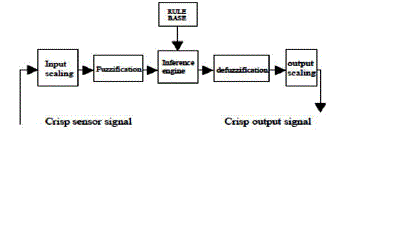 |
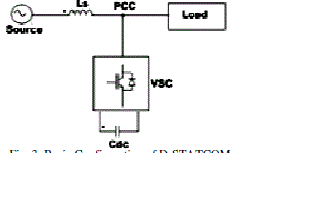 |
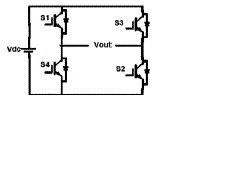 |
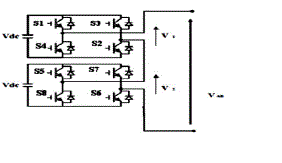 |
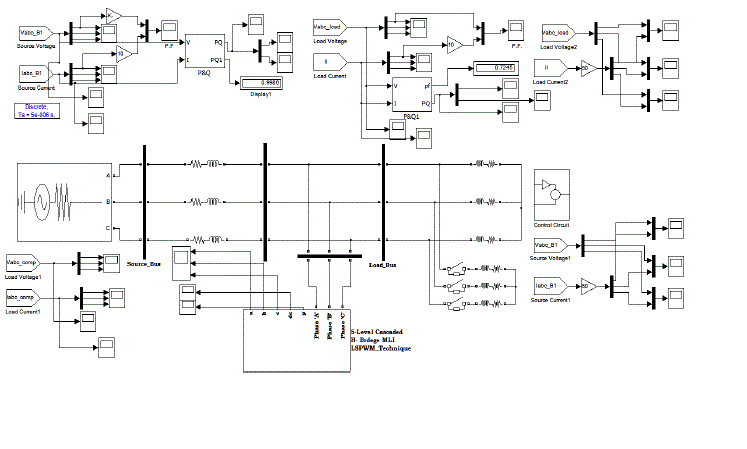 |
| Figure 1 |
Figure 2 |
Figure 3 |
Figure 4 |
Figure 5 |
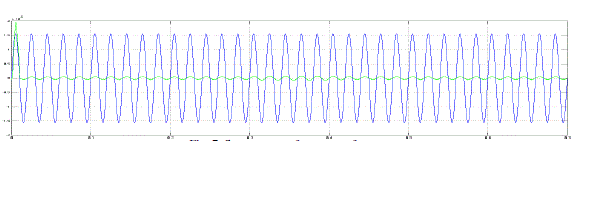 |
 |
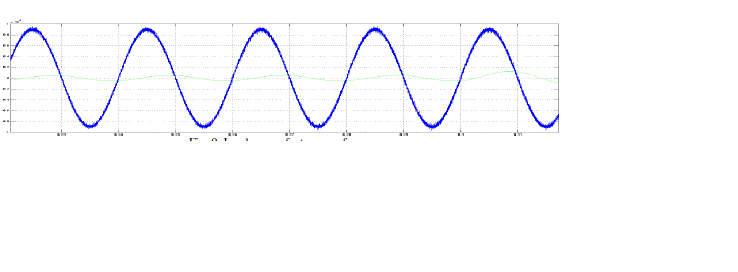 |
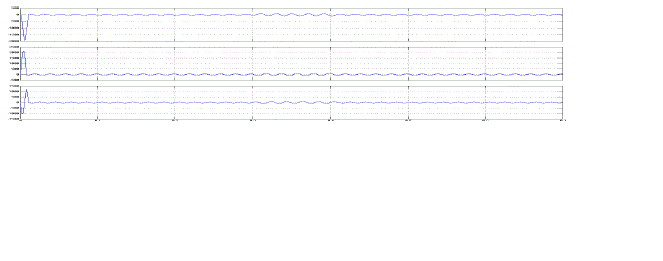 |
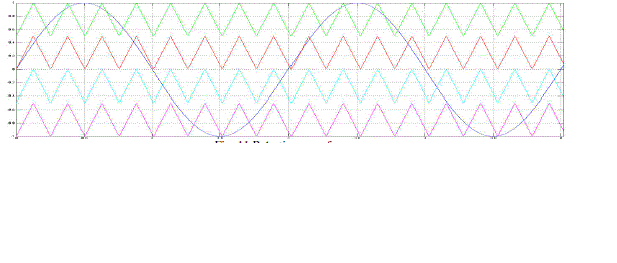 |
| Figure 6 |
Figure 7 |
Figure 8 |
Figure 9 |
Figure 10 |
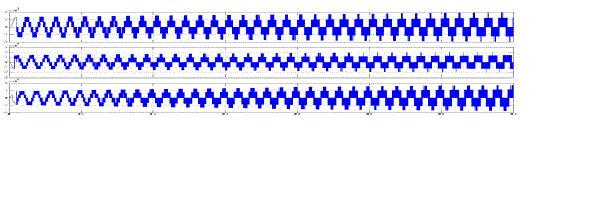 |
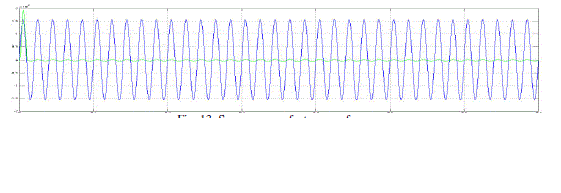 |
 |
 |
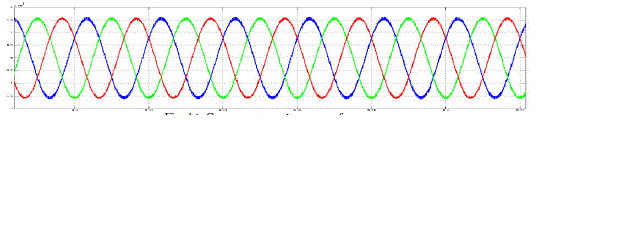 |
| Figure 11 |
Figure 12 |
Figure 13 |
Figure 14 |
Figure 15 |
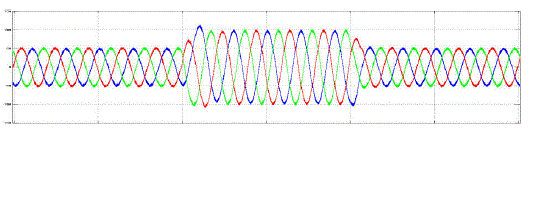 |
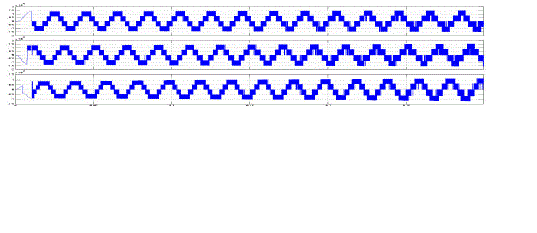 |
| Figure 1 |
Figure 2 |
|
| |
References
|
- Hirofumi Akagi, Fellow, IEEE, Shigenori Inoue, Member, IEEE, and Tsurugi Yoshii “Control and Performance of a Transformer less Cascade PWM STATCOM with Star Configuration” IEEE Transactions on Industry Applications, Vol. 43, No. 4, July/August 2007
- Ben-Sheng Chen and Yuan-Yih Hsu, Senior Member, “A Minimal Harmonic Controller for a STATCOM” IEEE Transactions On Industrial Electronics, Vol. 55, No. 2, February 2008
- Qiang Song and Wenhua Liu, Member, IEEE “Control of a Cascade STATCOM With Star Configuration Under Unbalanced Conditions” IEEE Transactions On Power Electronics, Vol. 24, No. 1, January 2009
- Chien-Hung Liu and Yuan-Yih Hsu, Senior Member, IEEE “Design of a Self-Tuning PI Controller for a STATCOM Using Particle Swarm Optimization” IEEE Transactions On Industrial Electronics, Vol. 57, No. 2, February 2010
- Bo?stjanBla?zi?c, Student Member, IEEE, and Igor Papi?c, Member, IEEE “Improved D-StatCom Control for Operation With Unbalanced Currents and Voltages” IEEE Transactions On PowerDelivery, Vol. 21, No. 1, January 2006
- Jon AndoniBarrena, Student Member, IEEE, Luis Marroyo, Member, IEEE, Miguel Ángel Rodríguez Vidal, Member, IEEE,and José Ramón TorrealdayApraiz “Individual Voltage Balancing Strategy for PWM Cascaded H-Bridge Converter-Based STATCOM” IEEE Transactions On Industrial Electronics, Vol.55, No. 1, January 2008
|